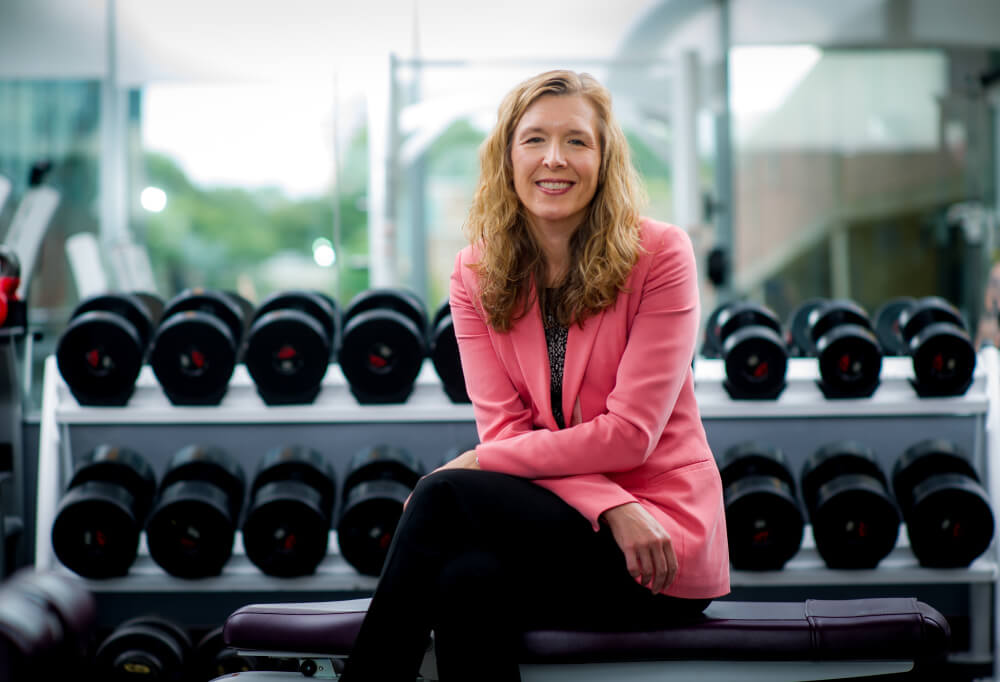A Prescription for Healthy Living: How Diet and Exercise Can Help Cancer Patients
A patient’s treatment plan for fighting cancer doesn’t stop at the hospital door. Adopting a healthy lifestyle, in terms of diet and exercise, is especially important for cancer patients in reducing stress, minimizing side effects, and boosting energy levels to power through treatment and recovery.
More than 93 million American adults could be counted as obese in 2016, according to the most recently available data from the Centers for Disease Control and Prevention. “Obesity not only increases the risks of developing cancer; it also increases the risks of complications in diagnosed patients,” says Jennifer Ligibel, MD, director of Dana-Farber’s Leonard P. Zakim Center for Integrative Therapies and Healthy Living.
Plus, in some common cancers, such as breast cancer and prostate cancer, many patients now tend to gain—rather than lose—weight during treatment.
“That contradicts a common misperception that people have had for many years,” Ligibel continues. “Some patients think, ‘I have cancer. I have to make sure I don’t lose weight,’ so they bulk up. But we have much better medications to help patients avoid nausea and weight loss during treatment now than we did even a few years ago.
“Many people become less active during their cancer treatment, and even afterward,” says Ligibel. “Some cancer treatments can also contribute to weight gain.”
How Patients Can Evaluate and Manage Their Diet
Ligibel recommends following the American Cancer Society’s guidelines on nutrition and weight management. They emphasize a plant-based diet with most nutrients coming from fruits, vegetables, whole grains, lean meats and fish.
“When you look across a population of people who have healthy behaviors—they eat a plant-based diet, their weight is in the normal range—we know that those people are less likely to get cancer in the first place,” Ligibel says. “In some cases, they are also less likely to have it comes back after it develops.”
Why Exercise is Important
Exercise is crucial in helping patients lose and manage weight and also provides other critical health benefits.
“If you exercise during your cancer treatment, and afterward, that can help prevent some of the long-term side effects that patients can develop from cancer treatment,” Ligibel says. “Exercise has been shown to reduce side effects like fatigue and joint pains from cancer treatments. Patients also feel better when they exercise and experience less anxiety and depression.”
Exercise also helps to preserve muscle; muscle loss often happens during cancer treatment, and can make recovery difficult, Ligibel says.
Those very side effects—especially fatigue—can make it difficult for patients to feel motivated to exercise in the first place. What’s important is to start now, wherever you are in your treatment, and to start slowly.
“I tell patients that 10 percent of something is better than 100 percent of nothing,” says Nancy Campbell, a clinical exercise physiologist at the Zakim Center. “Patients don’t have to go to a gym, start training for a marathon or buy expensive equipment. All it takes is a walk out your door or around your house to get started.”
Campbell suggests using a fitness tracking device, be it a basic pedometer, a smart phone app or Fitbit. After wearing it for a few weeks, you should have a baseline of your activity during treatment weeks, non-treatment weeks and weekends.
“It gives patients a good gauge of how much activity they are doing and how to gradually increase it,” she explains. “As people start to feel better, they get excited and do more and sometimes may do too much too soon. The device gives you feedback to let you know if you need to add more activity. If patients are sedentary, some of the apps buzz to remind you to move around every hour.”
To rebuild your muscle tone, Campbell suggests signing up for the free Live Strong program offered by YMCA locations across the country. This 12-week physical fitness program is designed specifically for cancer patients.
“There are also plenty of things you can do on your own at home,” she says. “You can get creative with light weights, such as soup cans, at home. But get some professional guidance before you start.”
Yoga, too, has been shown to have significant benefits for cancer patients in terms of reducing fatigue, improving sleep and improving quality of life.
“The data shows us that staying active during treatment definitely helps,” Campbell says. “Just doing a little something can take the edge off the nausea and fatigue, improve your mood and help take your mind off of it all.”
Courtesy of Dana-Farber Cancer Institute


